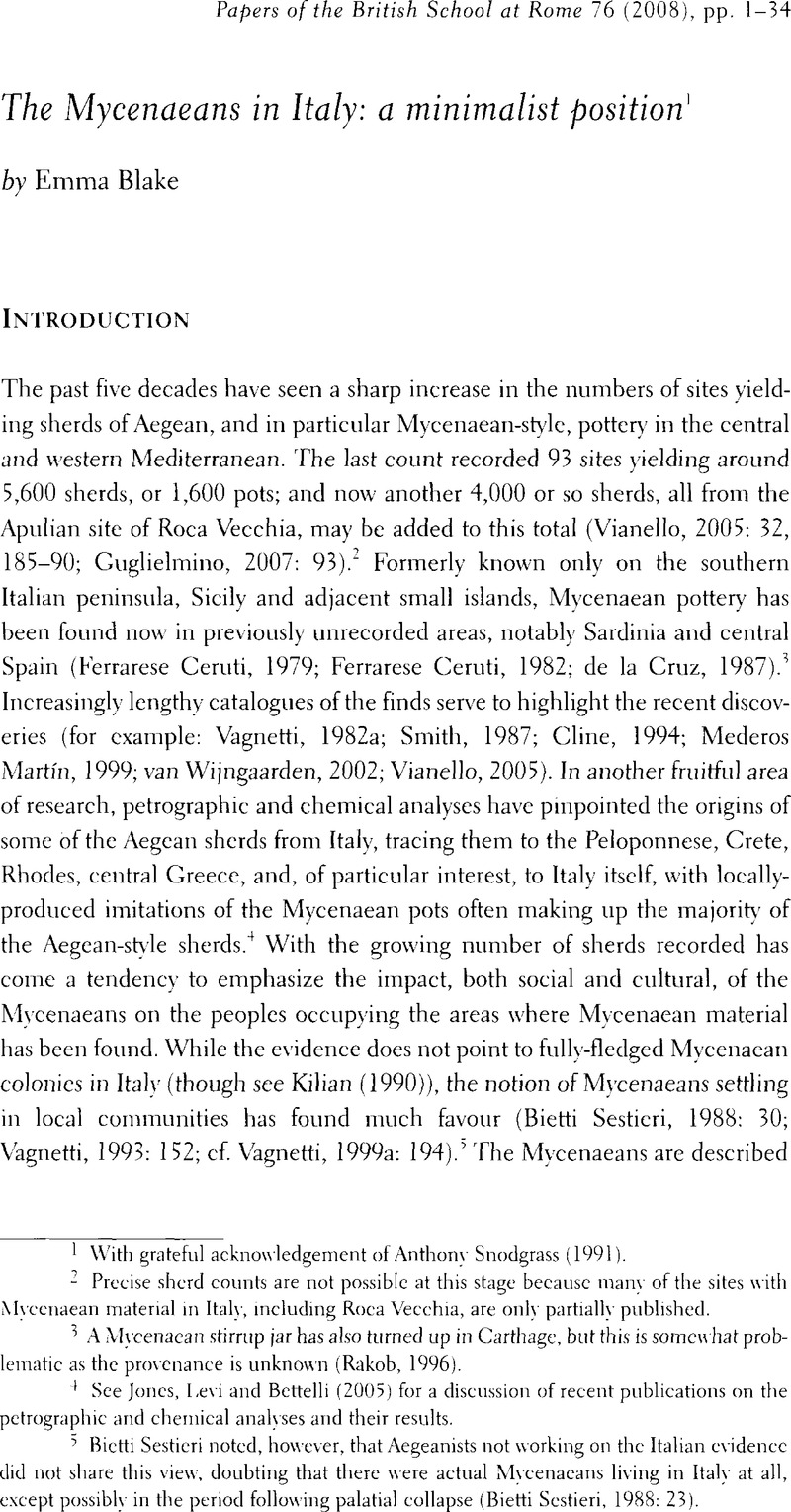Crossref Citations
This article has been cited by the following publications. This list is generated based on data provided by Crossref.
2010.
Vianello 2005. Late Bronze Age Mycenaean and Italic Products in the West Mediterranean.
Papers from the Institute of Archaeology,
Vol. 20,
Issue. 0,
van Dommelen, Peter
2012.
Colonialism and Migration in the Ancient Mediterranean.
Annual Review of Anthropology,
Vol. 41,
Issue. 1,
p.
393.
Iacono, Francesco
2012.
The Encyclopedia of Ancient History.
ALBERTI, GIANMARCO
2013.
Issues in the absolute chronology of the Early–Middle Bronze Age transition in Sicily and southern Italy: a Bayesian radiocarbon view.
Journal of Quaternary Science,
Vol. 28,
Issue. 6,
p.
630.
2015.
The Cambridge Prehistory of the Bronze and Iron Age Mediterranean.
p.
7.
Kristiansen, Kristian
and
Suchowska-Ducke, Paulina
2015.
Connected Histories: the Dynamics of Bronze Age Interaction and Trade 1500–1100bc.
Proceedings of the Prehistoric Society,
Vol. 81,
Issue. ,
p.
361.
Tanasi, Davide
and
Vella, Nicholas C.
2015.
The Cambridge Prehistory of the Bronze and Iron Age Mediterranean.
p.
57.
Iacono, Francesco
2015.
Feasting at Roca: Cross-Cultural Encounters and Society in the Southern Adriatic during the Late Bronze Age.
European Journal of Archaeology,
Vol. 18,
Issue. 2,
p.
259.
Knappett, Carl
and
Nikolakopoulou, Irene
2015.
The Cambridge Prehistory of the Bronze and Iron Age Mediterranean.
p.
25.
Cazzella, Alberto
2016.
The Intangible Elements of Culture in Ethnoarchaeological Research.
p.
37.
Russell, Anthony
and
Knapp, A. Bernard
2017.
SARDINIA AND CYPRUS: AN ALTERNATIVE VIEW ON CYPRIOTES IN THE CENTRAL MEDITERRANEAN.
Papers of the British School at Rome,
Vol. 85,
Issue. ,
p.
1.
Alberti, Gianmarco
2017.
New light on old data: Toward understanding settlement and social organization in Middle Bronze Age Aeolian Islands (Sicily) through quantitative and multivariate analysis.
Journal of Archaeological Science: Reports,
Vol. 11,
Issue. ,
p.
310.
Saltini Semerari, Giulia
2017.
Towards an Archaeology of Disentanglement.
Journal of Archaeological Method and Theory,
Vol. 24,
Issue. 2,
p.
542.
Middleton, Guy D.
2018.
Should I Stay or Should I Go? Mycenaeans, Migration, and Mobility in the Late Bronze Age and Early Iron Age Eastern Mediterranean.
Journal of Greek Archaeology,
Vol. 3,
Issue. ,
p.
115.
Sevara, Christopher
Salisbury, Roderick B.
Doneus, Michael
Draganits, Erich
Totschnig, Ralf
Frazzetta, Cipriano
and
Tusa, Sebastiano
2020.
A Landscape in Transitions: Guletta, a Multiperiod Settlement along the Mazaro River in Western Sicily.
Journal of Field Archaeology,
Vol. 45,
Issue. 5,
p.
334.
Foxhall, Lin
2020.
Widening horizons and close encounters: overseas engagement and economic outcomes in southern Italy.
Journal of Greek Archaeology,
Vol. 5,
Issue. ,
Sevara, Christopher
Salisbury, Roderick B.
Totschnig, Ralf
Doneus, Michael
Löcker, Klaus
and
Tusa, Sebastiano
2020.
New discoveries at Mokarta, a Bronze Age hilltop settlement in western Sicily.
Antiquity,
Vol. 94,
Issue. 375,
p.
686.
Milán Quiñones de León, Maria Soledad
2022.
Mycenean Routes Towards the West.
Gerión. Revista de Historia Antigua,
Vol. 40,
Issue. 2,
p.
377.
Knapp, A. Bernard
Russell, Anthony
and
van Dommelen, Peter
2022.
Cyprus, Sardinia and Sicily: A Maritime Perspective on Interaction, Connectivity and Imagination in Mediterranean Prehistory.
Cambridge Archaeological Journal,
Vol. 32,
Issue. 1,
p.
79.
Breglia, Francesco
Bouby, Laurent
Wales, Nathan
Ivorra, Sarah
and
Fiorentino, Girolamo
2023.
Disentangling the origins of viticulture in the western Mediterranean.
Scientific Reports,
Vol. 13,
Issue. 1,



